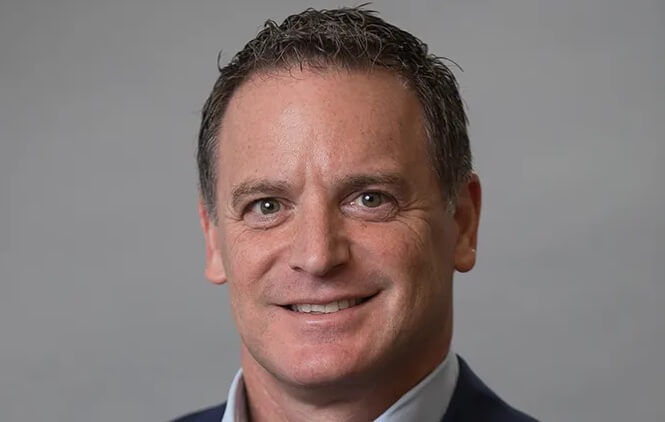PERSON OF THE WEEK: Today’s mortgage brokers face a plethora of challenges that hinder growth, from volatile interest rates and persistent inventory shortages to rising homeowners’ insurance premiums. However, there are significant opportunities to adapt and thrive—particularly in the residential real estate investor market, where demand for DSCR rental loans and fix-and-flip financing remains robust despite market headwinds.
In a recent interview with MortgageOrb, Ben Fertig, president, Constructive Capital, offers his insights on this trend and discusses the obstacles investors face today. He also explains how mortgage brokers can position themselves to capitalize on these opportunities while addressing common challenges investors face.
Q: How are mortgage rates, inventory shortages and insurance costs shaping the availability and demand for DSCR and fix-and-flip loans, and what strategies can brokers use to help investors overcome these hurdles?
Fertig: In terms of demand and availability, business-purpose loans (BPL) for residential real estate investments are much more rate agnostic compared to consumer mortgage products. Real estate investors place a lot of value on the acquisition of the property itself. If the property aligns with their investment model, they’ll move forward and not allow financing terms to be the driver.
That said, inventory shortages and rising insurance costs are adding pressure to eligibility, especially for DSCR loans. Higher purchase prices, driven by limited supply, and escalating insurance premiums both reduce cash flow, making it harder for a DSCR loan to qualify. We’ve seen that pressure on eligibility everywhere, but it’s magnified in high-cost and coastal markets, where carrying costs are naturally higher.
Obviously, there are specific jurisdictions where insurance costs have become a material concern. For example, in high-risk areas like Florida, premiums have increased significantly year-over-year. To account for these rising costs, lenders are likely to tighten DSCR requirements, raising minimum thresholds from 1.0X (neutral cash flow) to 1.2X or 1.3X.
Brokers who serve investors need to work with lenders that have diversified sources of capital. And not just diversified based on where the capital comes from—whether it’s bond and securitization markets, or insurance-backed funding—but also how that capital is structured, regardless of the derivative. They should also have price certainty through forward commitments or hedging or bulk lock capability. By partnering with such lenders, brokers can help investors secure financing that offsets the impact of higher carrying costs and tight inventory, ensuring they stay competitive in today’s market.
Q: What best practices can brokers adopt to build trust with investors by ensuring reliable access to capital, even in today’s unpredictable market?
Fertig: Mortgage brokers play a critical role in connecting investors to reliable funding, and their ability to provide access to different capital sources is unmatched. While the market for consumer refis have in effect gone away, investors continue to purchase and refinance properties as part of their investment strategy.
One best practice is for brokers to work with multiple lenders, so they can offer a variety of solutions to their investor clients. Constructive Capital would love to fund every loan, but not every deal fits into our risk tolerance or capitalization stack. Brokers as an institution actually do it better, as they organically have access to more lenders, so they can diversify just as a function of what they do every day.
Given that supply is so constrained, investors need access to wide variety of funding, and mortgage brokers inherently do that better than anyone. Diversifying their sources of capital will help with recruiting and loan officer retention as well. However, there are some critical nuances to residential investor loans, so having the support from an experienced BPL lender to make that transition seamless is going to be the key.
Q: In what ways do you anticipate new innovations, such as AI-driven underwriting and streamlined loan applications, can improve efficiency and expand opportunities in business-purpose lending?
Fertig: New innovations like AI-driven underwriting and streamlined applications have the potential to significantly enhance efficiency in business-purpose lending. While some market entrants have introduced technology under the guise of fintech or AI, however, many of these efforts fail because they lack a true understanding of this space. That said, as business-purpose lending has become more institutional, robust technology applications are playing a bigger role in supporting operational efficiency and enhancing the investor experience.
Unlike conventional consumer lending, the residential real estate investor market is inherently more analog. Investors often rely on nuanced decision-making processes, and their needs don’t always align with the highly automated workflows seen in traditional owner-occupied loans. While the automated underwriting technologies emerging in this space share similarities with tools like DU and LP, they are designed to address the specific complexities of business-purpose lending, particularly in areas like fix-and-flip projects. These apps can also use institutional data and predictive analytics to drive better decision-making.
As the real estate investment market continues to mature, there’s a real opportunity for these engines, whether AI driven or not, to add real value.
Q: What unique considerations should mortgage brokers keep in mind when working with investors on short-term projects like residential transitional loans compared to long-term rental investments?
Fertig: When working with investors on residential transitional loans (RTLs), one of the most critical considerations is ensuring the process is as seamless and straightforward as possible. Unlike long-term rental investments, fix-and-flip or short-term projects often involve unpredictable elements, such as unexpected renovation challenges or changes to the project timeline. Investors in this space are looking for lenders and mortgage brokers who can navigate these hurdles without adding unnecessary complexity. If the process feels onerous or overly complicated, they’re less likely to become a repeat client, so brokers should prioritize working with lenders who have efficient and supportive processes in place.
What makes RTL interesting for the broker, however, is that some lenders will let brokers engage in the communication process after closing and facilitate things like construction draws. This enables the broker to go to bat for their investor, which enables a higher level of relationship building. Any opportunity the broker has to strengthen the relationship with their investor outside of just the origination process is very valuable. Brokers who stay engaged with their clients after closing can also build trust and position themselves as long-term partners. This is particularly important in the real estate investor market, where investors are continually seeking funding for new projects.
Q: How do you see sustainable lending practices and regulatory changes influencing the future of business-purpose loans, and what steps can brokers take now to stay ahead of these trends?
Fertig: Particularly since the global financial crisis, the non-agency market for business-purpose loans has done a remarkable job of managing risk across the entire ecosystem, from origination to capital markets. Credit profiles are strong, the way these loans are leveraged in the capital markets is responsible, and the securitization processes are well-established. This has contributed to a regulatory environment that’s more relaxed compared to consumer mortgages, which has allowed the market to mature and attract institutional capital since 2012. That institutionalization has driven down costs and streamlined processes.
At the federal level, we don’t anticipate significant new regulations on loans to LLCs. There simply isn’t the political momentum to make that a priority. However, as the market grows, states are likely to step in with new regulations and compliance requirements. These could include licensing mandates or penalties for violations, which some states may see as a revenue opportunity. Mortgage brokers should prepare for this now by building a robust compliance program. Even without knowing the specifics of future regulations, there are already enough federal and state disclosure requirements to establish a framework that can adapt as needed.
Another critical consideration is working with capital partners who have institutional-grade processes. Brokers who align with compliant, well-capitalized lenders can position themselves to thrive as the ecosystem continues to evolve.










